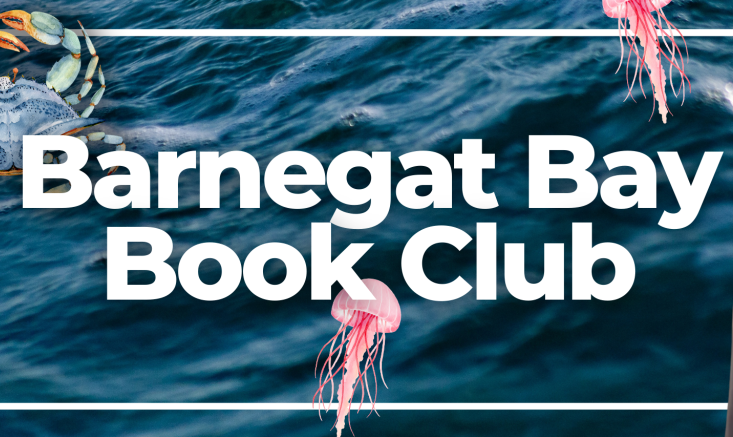On May 28, Save Barnegat Bay hosted Dr. Doug Tallamy, author and professor of entomology at the University of Delaware, to speak about the importance of native plants and how anyone could use their land and their time to help nature thrive. Dr. Tallamy’s newest book, Nature’s Best Hope, was the Save Barnegat Bay Book Club pick for the month of May. To learn more about the book club, click here.
Dr. Tallamy started out his talk by illustrating the important connections different organisms have that make life possible. Red oaks, as he explained, take two years for their acorns to mature. When these acorns fall at the end of the two years, little larvae emerge— the larvae of acorn weevils. These larvae then bury into the ground and pupate, and they only emerge two years later, when the acorns are mature, in order to mate and lay the eggs of their young in the acorns. This perfectly-timed interaction is no accident; it is actually a specialized relationship between these two species, and it is an example of how the behaviors of one species, the acorn weevil, relies on the patterns of another, the red oaks, to survive.
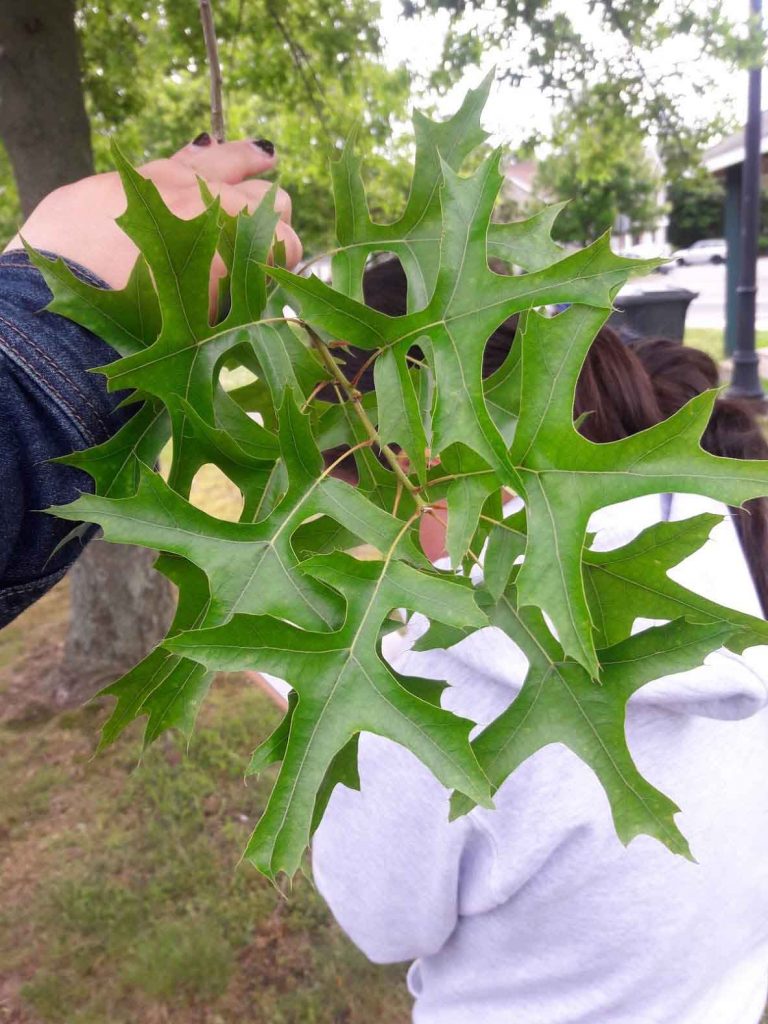
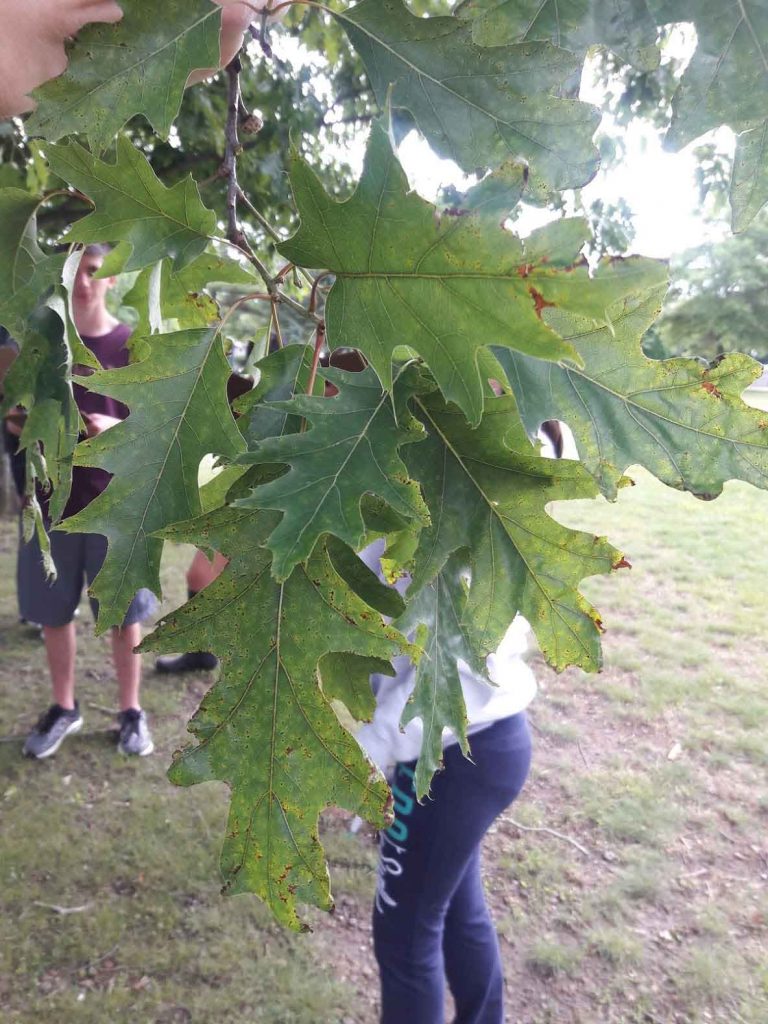
Nature is full of these specialized relationships. However, human activity has disrupted the natural world, and the changes we have made are far-reaching. In the contiguous United States, less than 5% of the land is close to a pristine natural state. The remaining 95% has been altered by all sorts of activities: the land has been logged, tilled, grazed, and paved; river paths have been altered by damming; our skies have been polluted and our climate has been irreversibly changed; and throughout the U.S., non-native species have been introduced that threaten to out compete native species and disrupt the specialized relationships on which the natural world is built. By carving up our natural lands into small, disconnected segments and by threatening our native plants with non-native invasive species, human activity has wrecked ecological havoc. This threatens not only the well being of the environment, but also the security of people as well, who, whether we commonly recognize it or not, are a part of the ecosystem.
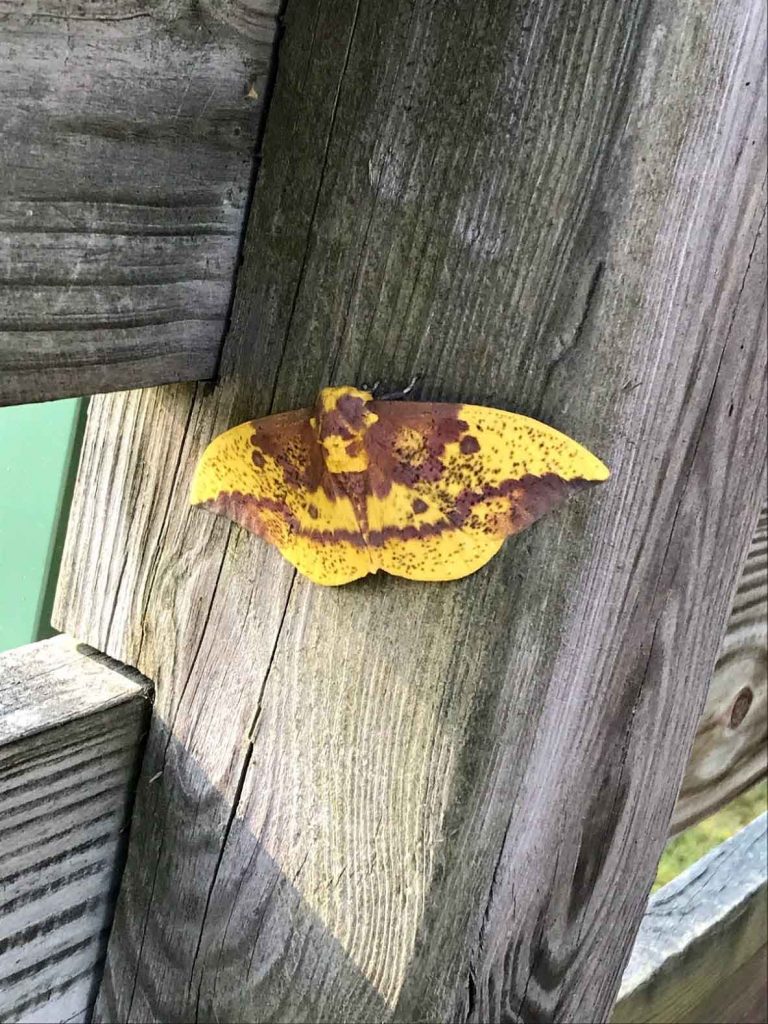
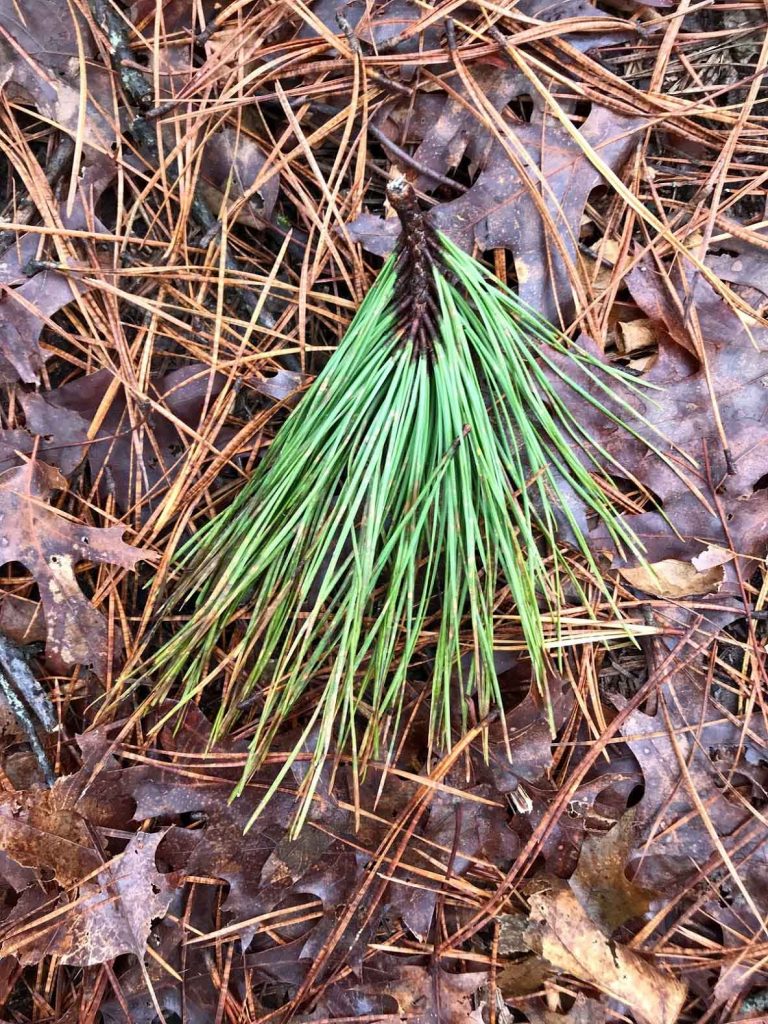
During his talk, Dr. Tallamy argued two main points: one, relying solely on government and organizations to save the environment will not work, so everyone must have a hand in protecting the Earth, and two, we must begin our preservation of the environment by focusing on the most important species— that is, the species that contribute the most to ecosystem function. Here, he uses insects, which have declined by as much as 45% in recent decades, as an example. Simply put, if insects were to disappear, we could not survive. If we are to preserve our ecosystems, we must address an important question: which insects are the most important ones to focus on saving? Dr. Tallamy proposes caterpillars are the answer, as they are essential to sustaining food webs; for example, caterpillars make up a dominant portion of the nestling diets of 16 out of 20 bird families. However, caterpillar populations may be under threat, as caterpillars are host plant specialists, meaning that each species is adapted to rely on only a handful of plants for food. The most well-known example is the monarch, whose caterpillars can only consume a few milkweed species.
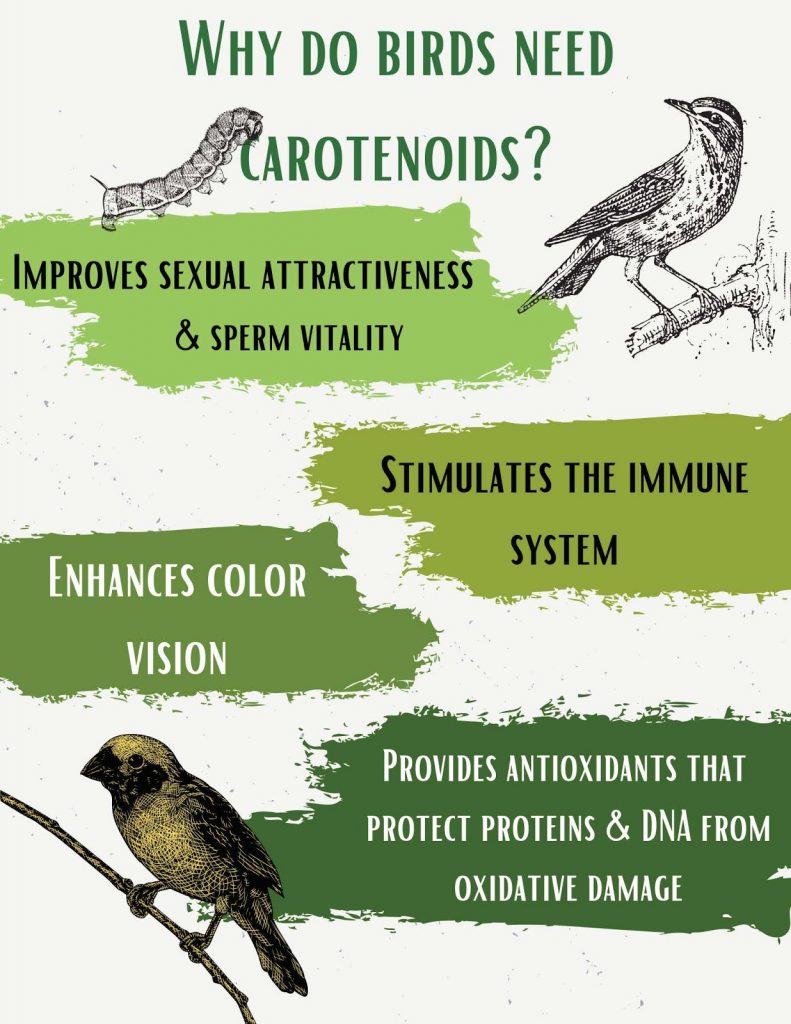
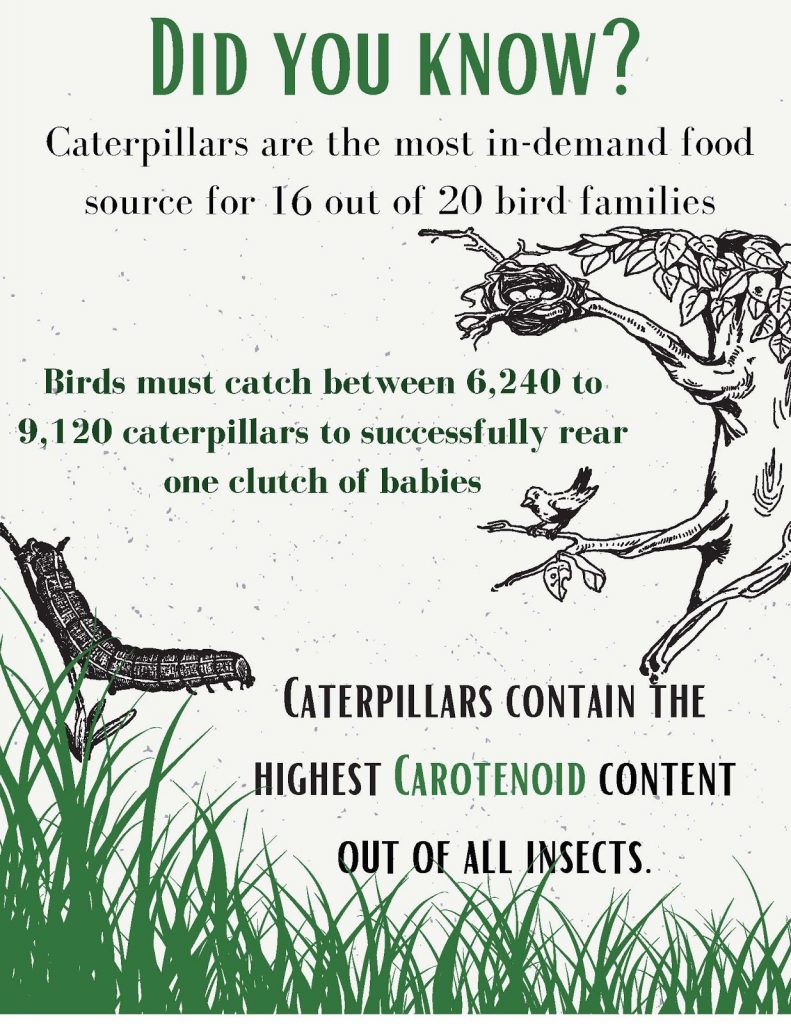
As most of the land in the United States is privately owned, it is important for private property owners to have a hand in protecting our ecosystems. This brings about yet another question: how can private property owners landscape for caterpillars and other important native insect species? The answer is simple: we need to add plants to our yards that support caterpillar populations. Dr. Tallamy has identified four keys to success in creating spaces where these important insects can thrive:
- We must shrink the lawn.
Our perfectly groomed and manicured lawns are a monoculture that sustains little life and limits ecological diversity. Mowing the grass kills any life that may try to live in our yards, and the use of fertilizers and pesticides threaten our watersheds. By reducing the size of our lawns and replacing them with more sustainable and diverse greenspace, we can better protect native animals and develop a more personal relationship with nature.
- Keystone plants are essential.
Not all native plants are created equal. Out of all our native plants, only 5% make 75% of the caterpillar food that drives food webs. So, when selecting native plants for our yards, we must choose productive plants that support many native species, such as native oaks, which support 557 species of native caterpillars in the mid-Atlantic region. The National Wildlife Federation’s Native Plant Finder is a great place to start looking for native plants and figuring out which native caterpillar species they support. iNaturalist is another helpful resource to learn more about native plants and insects.
- Keystone plants only work where there is limited light.
Our success in protecting native caterpillar species will be limited if we do not control light pollution. Light pollution kills insects in a variety of ways, from causing collisions to blindness. The best solution is to remove any porch lights or security lights from your yard. If the lights are necessary, switching them to a motion sensor and changing any white lights to LED yellow bulbs can reduce damage.
- We must allow caterpillars to complete their development.
480 species of caterpillars pupate in the soil or spin a cocoon in the leaf litter. Mowing our lawns and removing leaf litter causes larvae to drop to the ground and die. Layered landscapes with native ferns, shrubs, and other forms of groundcovers help to promote survivorship of caterpillar species.
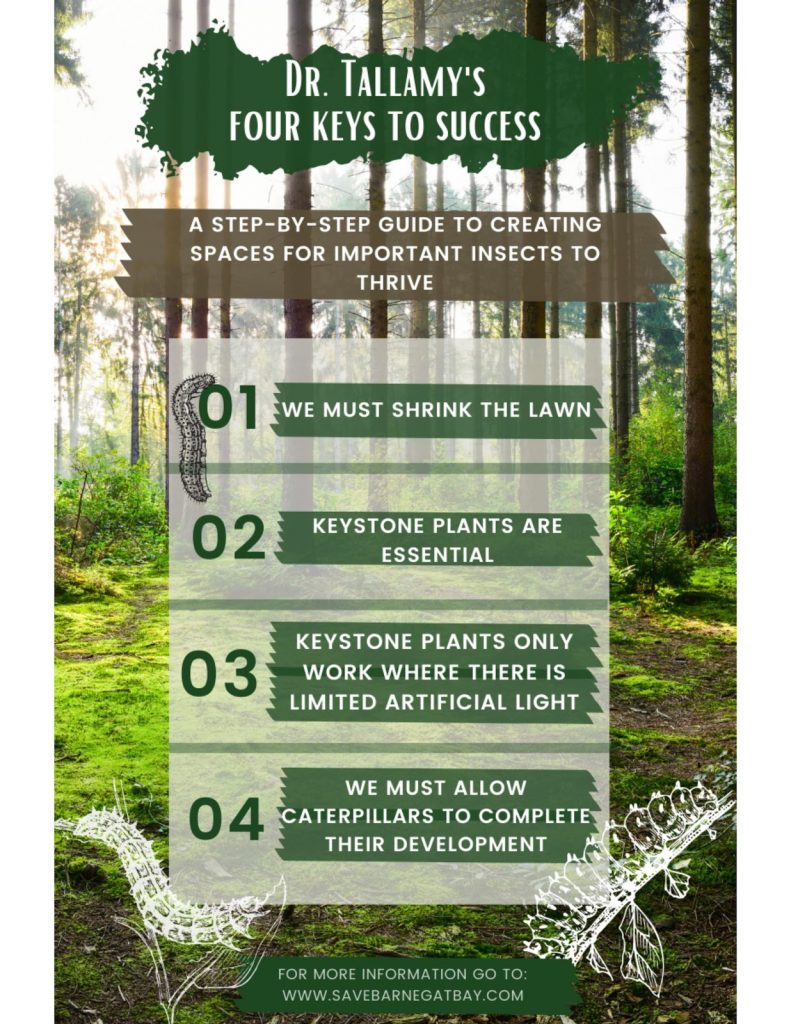
Environmental stewardship is the responsibility of every human being. All spaces have ecological significance, including our yards. That means that all of us, as individuals, have the power to promote ecological diversity. If you are a property owner, you can follow Dr. Doug Tallamy’s steps to create spaces where native species and insects can thrive. In addition, anyone can volunteer their time to organizations focused on promoting the health of our ecosystems. We all have the power to help nature thrive.
Written by Brianna Hoegler
Graphics by Corrine Hinton
